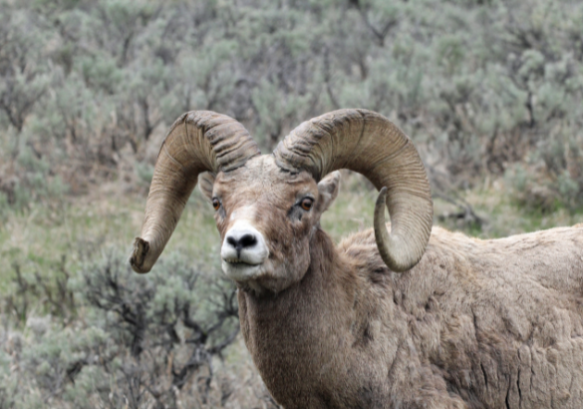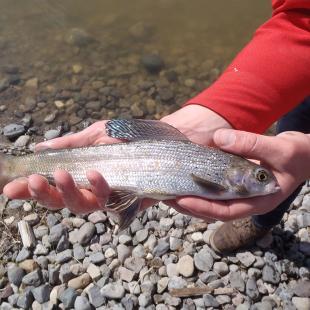Often nestled amidst the rocky terrain of North America's Rocky Mountains, the bighorn sheep (Ovis canadensis) stand as enduring symbols of ruggedness and resilience. Known for their impressive curved horns and adept climbing abilities, these magnificent animals have captivated the imagination of wildlife enthusiasts and conservationists alike.
Size and Color
The color pattern of a bighorn sheep includes a brown body with a white muzzle, underbelly, and rump patch with white lining down the back of the hind legs.
Adult rams weigh 175–300 pounds, while adult ewes weigh 125–200 lbs pounds. Ewes and small rams superficially resemble female Mule Deer (Odocoileus hemionus) and Elk (Cervus canadensis), and may be briefly confused with those species at a distance, but Bighorn Sheep are largely distinctive in appearance.

Distribution and Range
Bighorn Sheep occur in portions of the Cascade and Sierra Nevada mountain ranges, and throughout the Rocky Mountains from the Peace River in British Columbia south into northern Mexico.
In Wyoming, bighorn sheep occur in four core herds in the Absaroka, Teton, Gros Ventre, and Wind River mountain ranges. Ten smaller herds occur in the Wyoming, Snowy, Sierra Madre, and Laramie mountain ranges, as well as the Seminoe and Ferris Mountains, southern end of the Wind River Mountains, west slope of the Bighorn Mountains, the Black Hills, and Wind River Canyon.
In 2014 the estimated statewide winter population of Bighorn Sheep was 6,450. The large core herds in the northwest corner of the state account for over 85% of Wyoming’s statewide total, and represent some of the largest meta-populations of Bighorn Sheep throughout its range.
Bighorn Sheep Management
-
Answer
- Appendix A - Pinedale Meeting - February 8, 2000
- Appendix B - Lander Meeting - March 31, 2000
- Appendix C - Lander Meeting - June 29, 2000
- Appendix D - Laramie Meeting - August 18, 2000
- Appendix E - Laramie Meeting - December 14, 2000
- Appendix F - Rock Springs Meeting - April 4, 2001
- Appendix G - Lander Meeting - May 31, 2001
- Appendix H - Action Items, Definitions of Areas, Habitat Improvements
- Appendix H(a) - Necropsy Protocol
- Appendix H(b) - Die-Off Protocol
- Appendix H(c) - Participant Listing
- Appenxic I - Lander Meeting - June 29, 2004
- Appendix K - Disease/Stress/Predators/Research
- Appendix L - Transplant Proposals in Cooperative Review Areas
- Appendix L(a) - Transplant Proposals in Existing Herd Units
- Appendix L(b) - Public Process Recommendations
- Appendix M - Definitions - Bighorn Sheep Management Areas
- Appendix N - Core Native Herds - Boundary Definition
- Appendix O - A Review of Predation on Bighorn Sheep
- Appendix P - Habitat Subcommittee Meeting - September 13, 2001
- Appendix R - Research Recommendations - January 14, 2008
Statewide Bighorn Sheep Management Areas

















